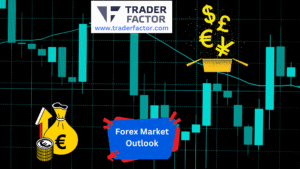The Australian dollar took a nosedive, becoming the poorest performer among its peers with a 0.8% drop following the Reserve Bank of Australia’s (RBA) anticipated interest rate hike. This move signalled a potentially tougher inflation outlook.
This hike was largely motivated by an unanticipated strong inflation result for Q3, which reversed an earlier pattern of easing inflation.

However, a shift in the RBA’s language, specifically regarding future rate hikes, led traders to speculate that the central bank might have concluded its cycle of rate increases. The RBA indicated a more data-dependent approach towards future monetary tightening, a departure from previous signals. Despite this, Tuesday’s hike elevated Australian rates to their highest in 12 years.
Monetary Policy Decision by RBA
The Reserve Bank of Australia (RBA) has decided to raise the cash rate target by 25 basis points to 4.35 per cent. This move also saw an increase in the interest rate paid on Exchange Settlement balances by 25 basis points to 4.25 per cent.
Inflation in Australia has passed its peak but remains high and more persistent than anticipated a few months ago. The Consumer Price Index (CPI) inflation indicates that while goods price inflation has eased, many services’ prices continue to rise briskly.
Impact of Interest Rate Hikes
Since May last year, the RBA had increased interest rates by 4 percentage points. These higher interest rates were aimed at establishing a more sustainable balance between supply and demand in the economy. The RBA noted that the impact of the more recent rate hikes would continue to flow through the economy, which led to the decision to hold rates steady to provide time to assess the impact of the increase in interest rates so far.
Economic Outlook
Despite a period of below-trend growth, the Australian economy has shown resilience, performing stronger than expected over the first half of the year. Underlying inflation was higher than anticipated at the time of the August forecasts, including across a broad range of services.
The labour market conditions have eased but remain tight, with housing prices continuing to rise across the country. However, high inflation is weighing on people’s real incomes, resulting in weak household consumption growth and dwelling investment.
Employment and Wage Growth
Employment growth is forecasted to slow down, with the unemployment rate expected to rise gradually to around 4¼ per cent. This is a more moderate increase than previously forecasted. Wages growth has picked up over the past year but is still consistent with the inflation target, provided that productivity growth picks up.
Inflation Targeting and Uncertainties
Returning inflation to target within a reasonable timeframe remains the Board’s priority. High inflation makes life difficult for everyone and damages the functioning of the economy. It erodes the value of savings, hurts household budgets, makes it harder for businesses to plan and invest, and worsens income inequality.
There are significant uncertainties around the outlook. Services price inflation has been surprisingly persistent overseas and the same could occur in Australia. There are uncertainties regarding the lags in the effect of monetary policy and how firms’ pricing decisions and wages will respond to the slower growth in the economy at a time when the labour market remains tight.
Global Economical Factors
The outlook for household consumption also remains uncertain, with many households experiencing a painful squeeze on their finances, while some are benefiting from rising housing prices, substantial savings buffers and higher interest income. Globally, there remains a high level of uncertainty around the outlook for the Chinese economy and the implications of the conflicts abroad.
Whether further tightening of monetary policy is required to ensure that inflation returns to target in a reasonable timeframe will depend upon the data and the evolving assessment of risks. The Board remains resolute in its determination to return inflation to target and will do what is necessary to achieve that outcome.
Table of Contents
ToggleChina’s Economic Performance and its Implication on Asian Markets
Meanwhile, the Chinese yuan depreciated by 0.1% as data revealed that China’s exports for October fell more than projected, resulting in the country’s trade surplus reaching its weakest level in 17 months. Although imports saw an unexpected rise, the decline in exports indicates a continuing downturn in one of China’s key economic sectors: its exporters. This decrease was primarily driven by diminished demand from the country’s major export markets in the West.
This economic weakness in China has negative implications for the broader Asian markets, which rely on China as a trade centre. Upcoming Chinese inflation data is expected to provide further insight into the situation in the Asian powerhouse.
US Dollar Index Rise Amid Inflation Concerns
In other news, the US dollar index and dollar index futures each rose by 0.2% during Asian trading hours, building on an overnight recovery from six-week lows. This comes after Kashkari warned that despite the Fed making some progress against inflation, it remained significantly above the central bank’s 2% target. This could necessitate additional rate hikes. He noted that the US economy has shown unexpected resilience, which could maintain inflation in the coming months.
Before Kashkari’s remarks, market expectations were nearly certain that the Fed had concluded its cycle of rate hikes, particularly after last week’s weak payroll figures. However, traders adjusted their expectations for a pause from the Fed on Tuesday.
EUR/USD Struggles at 1.0700 Amid US Dollar Recovery
The EUR/USD pair is battling against the 1.0700 mark, as the US Dollar makes a recovery. The pair is under fresh selling pressure early in Europe on Tuesday, with an uptick in the US Dollar and the return of risk-off flows contributing to the downward pressure. The speeches from the European Central Bank (ECB) and Federal Reserve (Fed) are anticipated to impact the pair’s performance.
EURUSD Daily Chart

Consolidation Phase for EUR/USD
During the Asian trading session on Tuesday, the EUR/USD pair continued its sideways consolidation movement, staying below the highest level reached since September 13. Despite this, spot prices are maintaining above the 1.0700 mark, largely influenced by the price dynamics of the US Dollar.
Influence of DXY and Fed Officials’ Remarks
The US Dollar Index (DXY), which gauges the Greenback against a basket of currencies, is capitalising on the overnight bounce from a near eight-week low. This is acting as a key factor exerting pressure on the EUR/USD pair. Mixed signals regarding the future rate-hike path from Federal Reserve officials have resulted in a significant rise in US Treasury bond yields on Monday, prompting some USD short-covering action.
US Dollar Index Daily Chart

Fed Governor Lisa Cook stated that the central bank’s current target interest rate is adequate to bring inflation back to the Fed’s 2% target. However, she added that vigilance would be maintained to ensure the inflation target is achieved.
In contrast, Minneapolis Fed President Neel Kashkari expressed a preference for overtightening monetary policy rather than underdoing it to bring inflation down to the central bank’s 2% target.
Uncertainty Over Fed’s Next Move
These divergent opinions have increased uncertainty over the Fed’s next policy move. Investors are increasingly convinced that the US central bank is nearing the end of its rate-hiking cycle, a belief reinforced by Friday’s softer US jobs data. Current market pricing even suggests a higher probability of the Fed cutting rates in June 2024. Consequently, all eyes will be on Fed Chair Jerome Powell’s appearances on Wednesday and Thursday.
Disclaimer:
All information has been prepared by TraderFactor or partners. The information does not contain a record of TraderFactor or partner’s prices or an offer of or solicitation for a transaction in any financial instrument. No representation or warranty is given as to the accuracy or completeness of this information. Any material provided does not have regard to the specific investment objective and financial situation of any person who may read it. Past performance is not a reliable indicator of future performance.

















